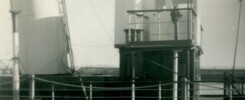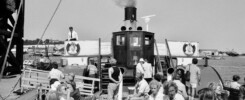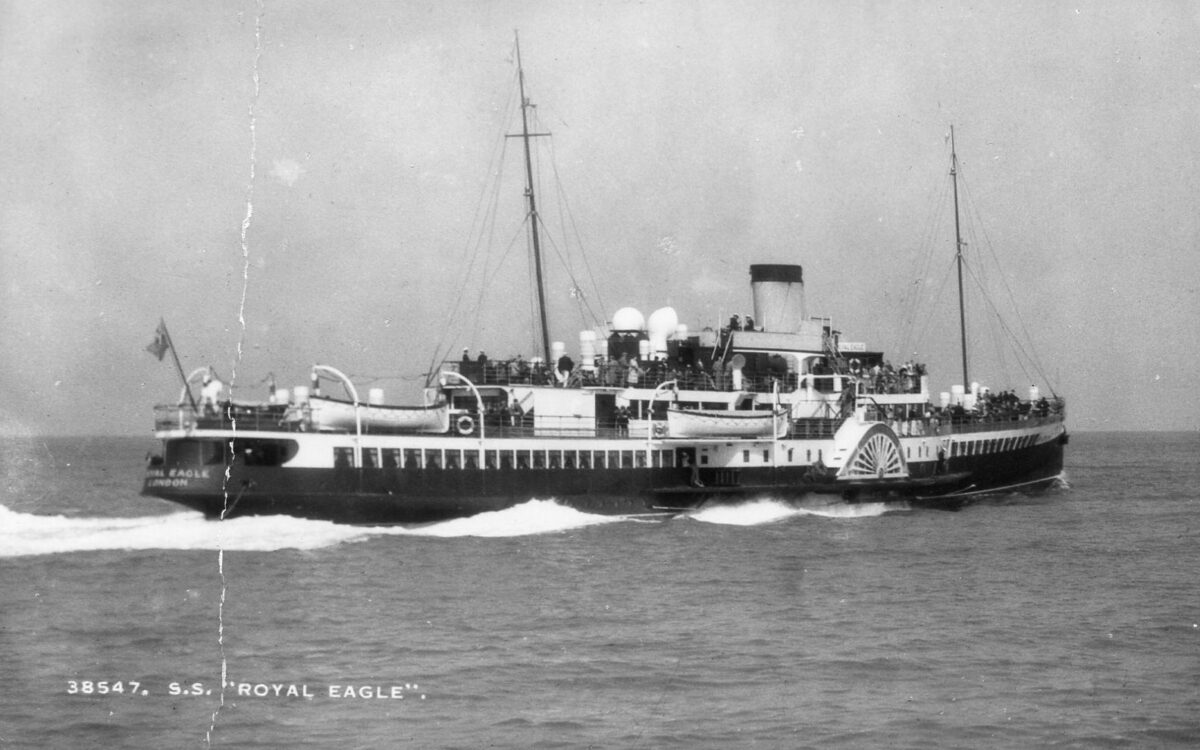
By Wednesday 2nd March 1932 Royal Eagle had been in the fitting out basin at the Mersey shipyard of Cammell Laird for just one week having been launched the previous Wednesday.
She was being built for the General Steam Navigation Company’s service from London to Margate and Ramsgate on which passengers were expected to be aboard sailing down the Thames and then back home again in the late afternoon/early evening for as much as five hours each way. Royal Eagle’s specification was therefore designed to provide more covered accommodation and greater dining saloon and bar facilities than on any other excursion paddle steamer sailing in the UK at that time.
At 280ft LOA and 1,538 GRT she was a big ship designed to carry 2,000 passengers with a huge crew of 70, around 50 of whom were working in the catering department as cooks, stewards, barmen, pot washers and so on.
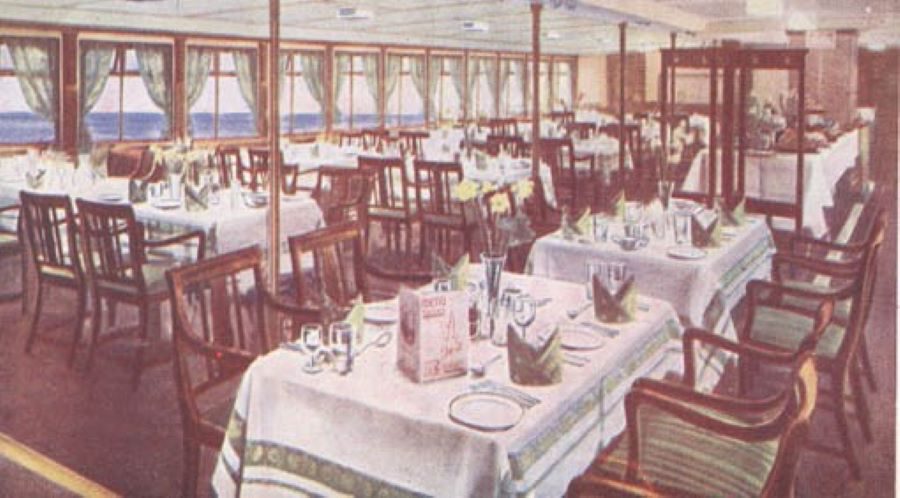
The main deck had two large dining saloons the one aft seating 126 and the one forward 100 with tables arranged for seating between 4 and 12 passengers. The dining saloons extended the full width of the ship, had square windows to give a better view of the passing scenery and were panelled in hardwood.
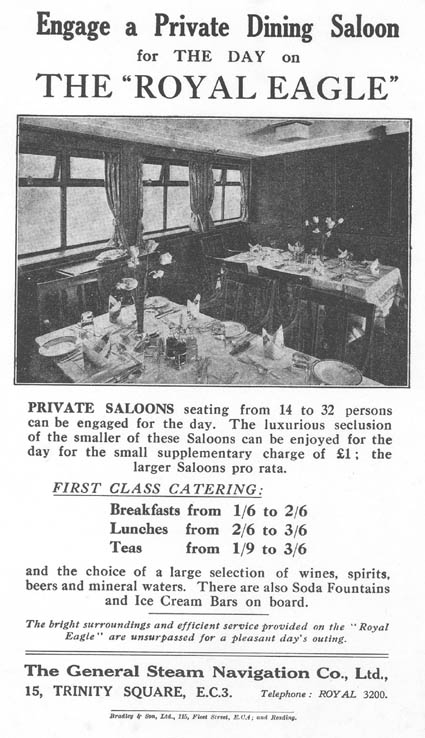
There were also two private dining saloons which could accommodate 12 in each at the after end.
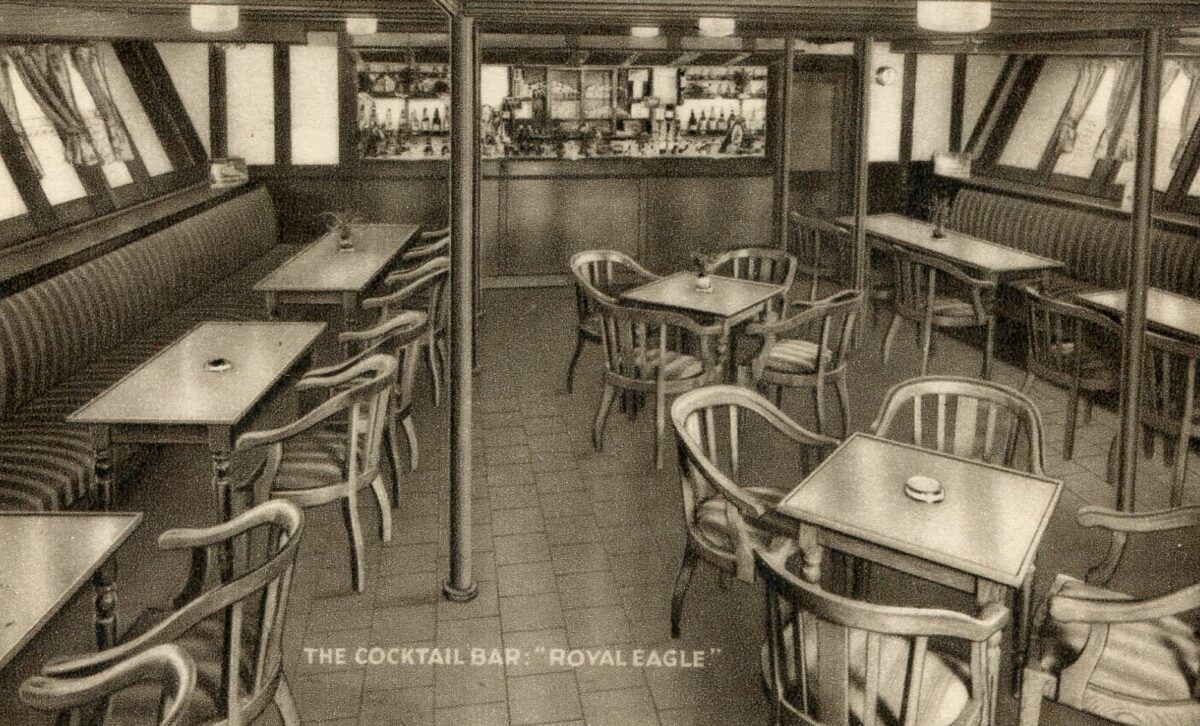
The passenger spaces on the lower deck included a smoke room to seat 52 persons furnished with upholstered settees, small tables and upholstered armchairs with a bar at the forward end. Aft there was an auxiliary dining saloon to seat 36 persons. Two pantries, one forward and one aft with another bar aft and a soda fountain forward were also provided. Ladies’ and Gentlemen’s lavatories were on the forward sponsons and a larder and scullery as well as the chief engineer’s and chief steward’s cabins were on the after sponsons.
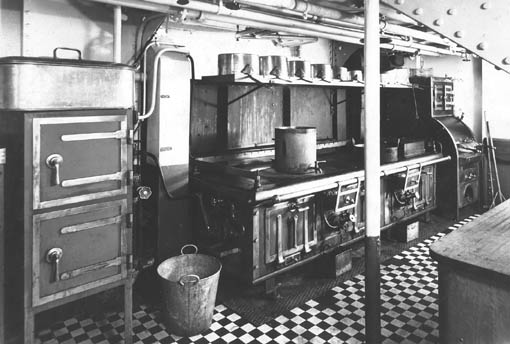
The galley was situated at the after end of the engine room casing and was fitted with all the latest cooking gear including an oil fired range, grill, hot press, food-lifts and so on as to be expected in a passenger vessel in this class serving quality meals. A cloak room and a shop were at the forward end of the casing.
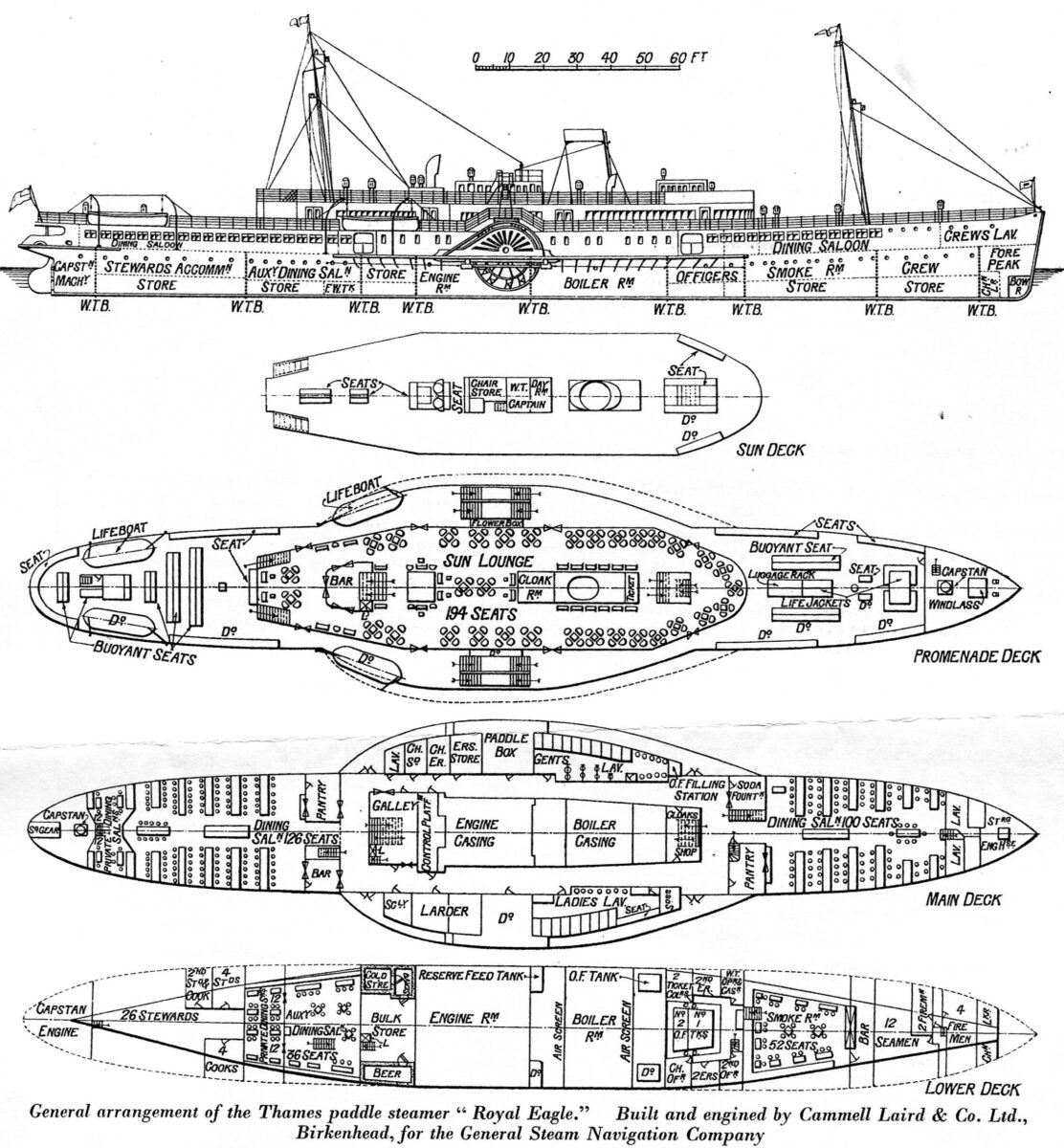
The refrigerated spaces consisted of a provision store of 400 cubic feet, a wine and beer store of 500 cubic feet on the main deck and a pantry cupboard of 72 cubic feet capacity on the sponson deck with the required temperatures maintained by a large Hallmark compressor coupled to direct expansion evaporator circuits in the chambers with the whole plant supplied and fitted by J & E Hall Ltd of Dartford. The ship had electric lighting throughout with the generating sets being placed in the engine room, the lighting effects having been specially considered in conjunction with the decoration schemes.
If you want to provide quality catering on an excursion paddle steamer that’s the way to do it. You need all the right kit with which to prepare it all. You need the right space to cook, serve and deliver it. And you need enough people of a suitable quality to make it all happen smoothly.
Royal Eagle ticked all these boxes and had no less than 50 in her catering department to make sure that things all ran smoothly. But even she could only accommodate 286 persons seated in the totality of all her dining saloons out of her total passenger compliment of 2,000. Of course in those days most people didn’t want a full meal when they were out on a day trip. Which is just as well as on the luxuriously appointed Royal Eagle, even with two sittings for meals 1,500 would have gone hungry.
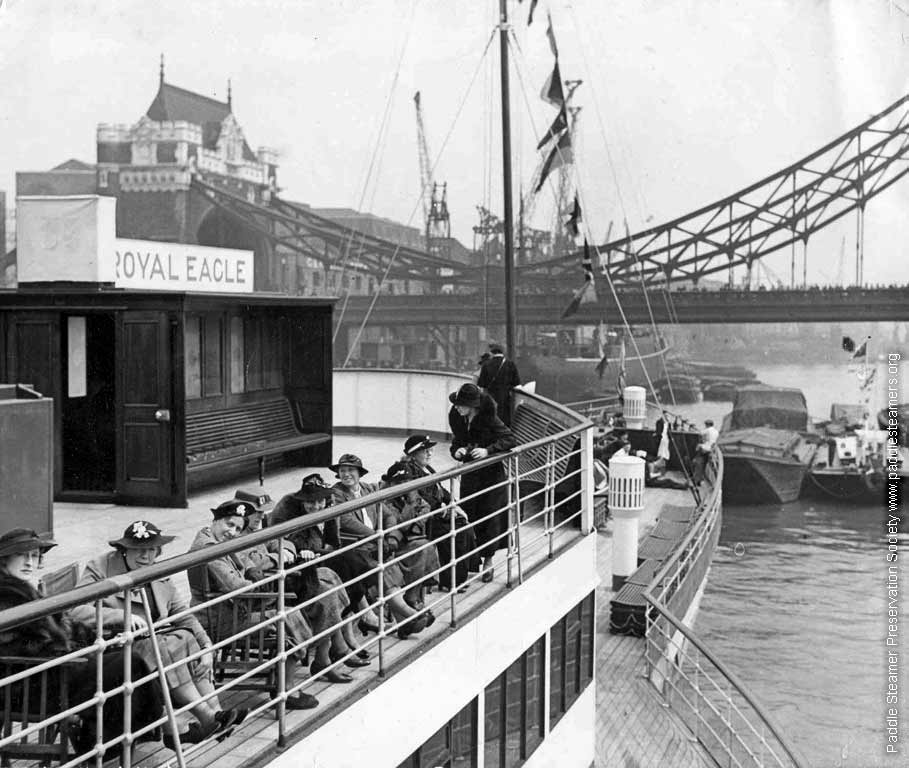
Riyal Eagle left the shipyard on the Mersey on 30th April and started her service on the Thames on 14th May 1932 under the command of Captain W G “Bill” Branthwaite.
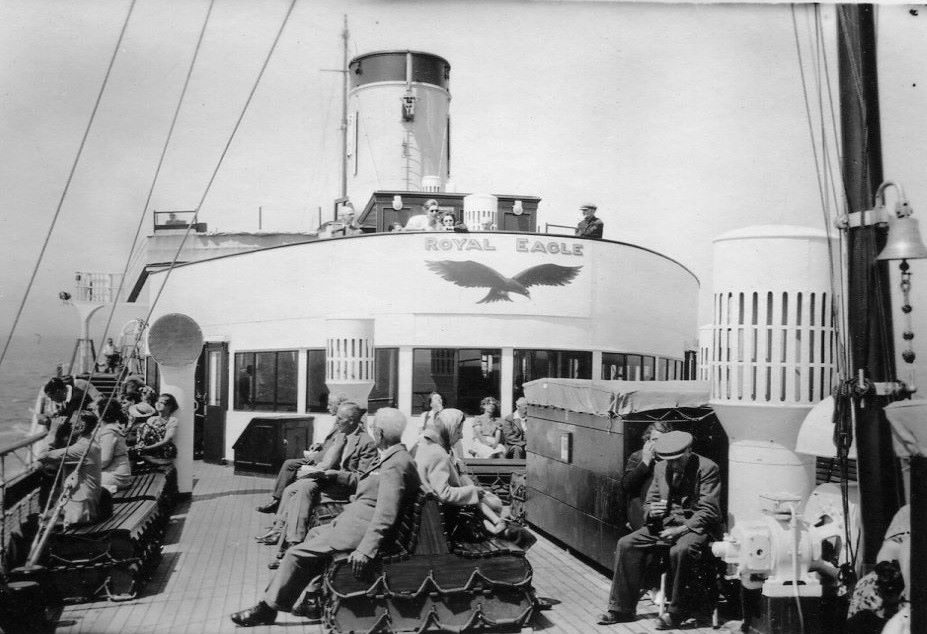
Royal Eagle was branded in the marketing material as “London’s Luxury Liner” with her fares higher, and sometimes much higher, than those for other vessels in the fleet. She is a good example of marketing segmentation at its best. She was targeting the toffs who had money. Her running mate Golden Eagle, which shadowed her on the same route from London to the Kent Coast, offered cheaper fares and was targeting everybody else of more modest means or more thrifty nature.
Kingswear Castle returned to service in 2023 after the first part of a major rebuild which is designed to set her up for the next 25 years running on the River Dart. The Paddle Steamer Kingswear Castle Trust is now fund raising for the second phase of the rebuild. You can read more about the rebuilds and how you can help if you can here.
John Megoran
This article was first published on 2nd March 2021.

